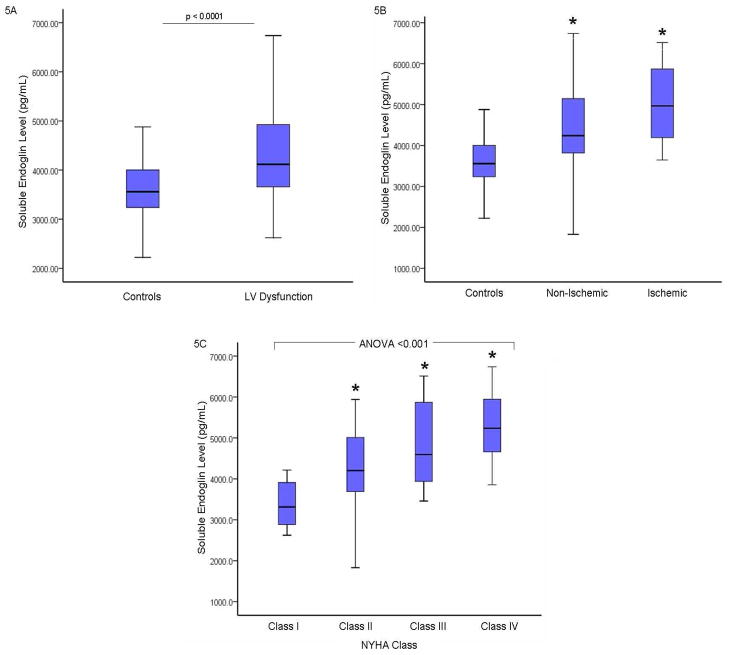Figure 5.
Soluble Endoglin Expression in Subjects with Suspected LV Dysfunction Compared to healthy controls, sEng levels were significantly higher in the total group of 82 study subjects (3589+588 vs 4257+966 pg/mL, respectively, p<0.005; Figure 5A). Among study subjects with a low LVEF<50%, sEng levels were increased regardless of whether the underlying etiology was non-ischemic or ischemic (Figure 5B). Soluble endoglin levels were higher in subjects with ischemic cardiomyopathy compared to patients with non-ischemic heart failure (p=0.06). Among study subjects, worsening NYHA classification corresponded with increased sEng levels (NYHA Class 1: 3644.9+579, Class II: 4307+968, Class III: 4746+947, Class IV: 5089+1073 pg/mL; *p<0.01 vs Class 1; ANOVA p<0.001; Figure 5C). [LVEF: left ventricular ejection fraction; NYHA: New York Heart Association; sEng: soluble endoglin].

